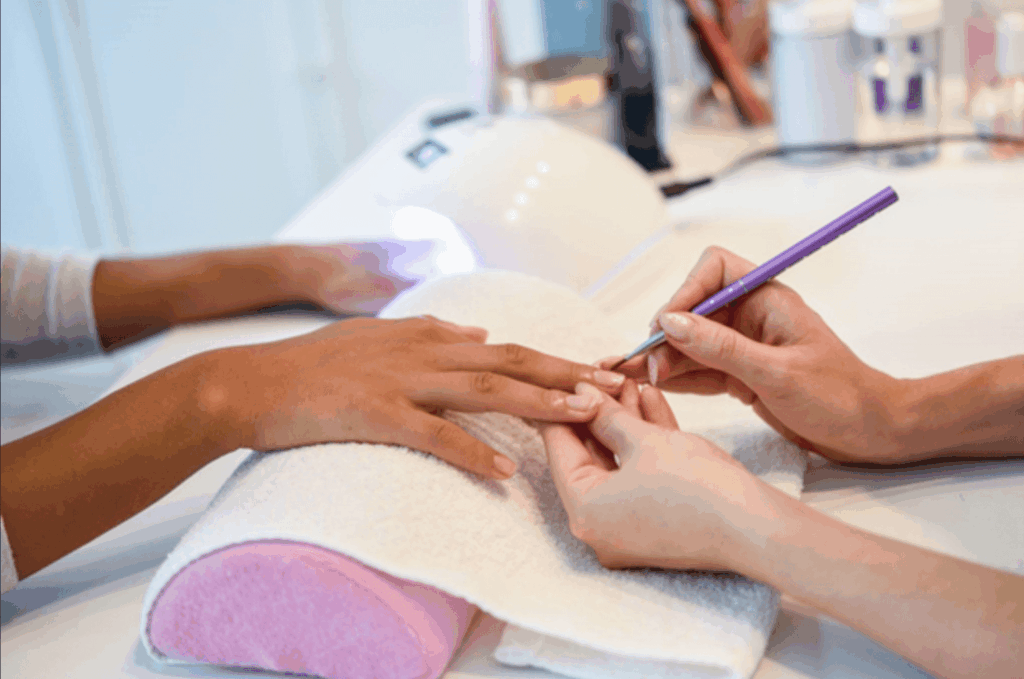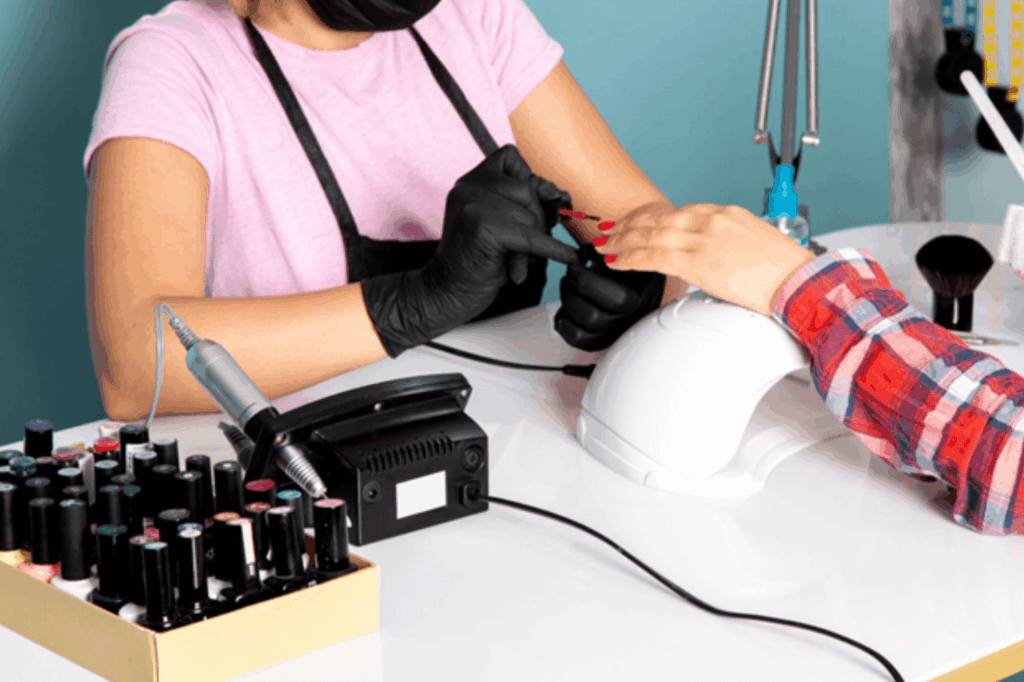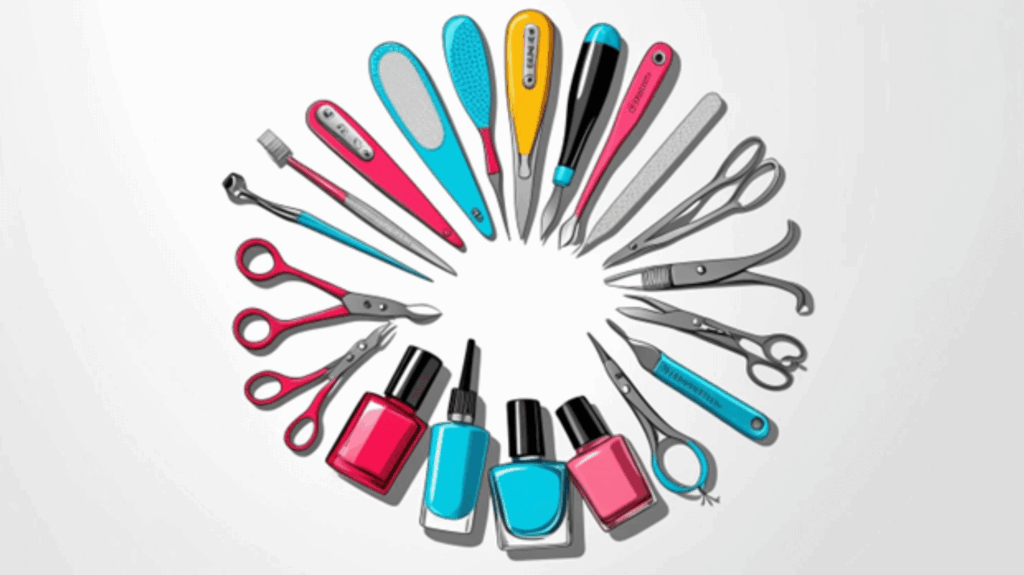How to Become a Manicurist? 10 Things You Need to Know

Table of Contents
Becoming a manicurist could start with a passion. A passion to gain a new skill, a love for nail and hand care, a desire to put a smile on a beautiful face, or just the quest for trying something new. However, starting on this journey can feel daunting and overwhelming.
The rising demand for skilled manicurists over the years has been quite noticeable, especially in this era where people are constantly prioritizing self-care, self-love, and grooming. If you aspire to work in a high-end salon, run a personal nail studio, or offer mobile nail services, the right information is necessary for you to thrive.
Today, I’ll go over 10 essential things every aspiring manicurist should know. This guide comes from direct involvement and contains all the necessary tips to become, develop, and succeed as a manicurist.
Who Is a Manicurist?
A manicurist is a person whose main job involves caring, grooming, and aesthetically enhancing fingernails and hands. Usually, they shape and trim nails, treat cuticles, exfoliate hands, apply nail polish, and offer relaxing hand massages. They could also create simple nail designs or recommend treatments to improve nail health.
I am making the description detailed enough because people often mistake a manicurist for a nail technician. A manicurist traditionally focuses on natural nail care and cosmetic treatments for the hands, while a nail technician offers more advanced services like gel extensions, acrylics, 3D nail art, or electric file use.
However, recent developments have seen people getting trained in both areas and holding dual titles, depending on their services and certifications. I made a clear description of what a comprehensive nail class provides in my article on the benefits of nail classes.
A manicurist usually works in a salon, spa, nail studio, or as an independent or freelance professional. In most regions, they are required to complete a certified training program or pass a licensing exam to legally offer services to clients.
10 Things You Should Know to Become a Manicurist
Becoming a manicurist involves hard work, and that involves gaining knowledge. What you know could determine if you succeed or not. Here are 10 things you should know to become a manicurist:
1. Understand the Role of a Manicurist

Understanding the role of a manicurist is your first step towards becoming one. Your requirement to creatively combine your artistry and technical precision to enhance the appearance of nails is the bedrock of this profession.
Beyond the skill and due to the direct contact with customers for a long period, a successful manicurist needs to pick up some other important traits. These traits involve human connection and interaction, and are not easily learned from a class, but by putting them into practice. They include:
- Emotional intelligence
- Attention to detail
- Knowing when and when not to speak
You should know that as a manicurist, you are saddled with the responsibility of creating mini escapes for clients, quiet, comforting moments where they can unwind and be taken care of. Understanding the vital roles of a manicurist helps you decide whether they match who you are, and that’s my next point.
2. Ensure This Career Fits Your Lifestyle and Goals
Before committing to a career as a manicurist, you should carefully assess whether this career truly aligns with your personality, lifestyle, and long-term ambitions. This is a rewarding and creative profession that comes with responsibilities and physical demands that may not suit everyone.
Your job as a manicurist typically involves spending most of your time working closely with clients, often providing detailed, hands-on services. So, if you enjoy putting a beautiful smile on people’s faces, boosting their confidence, and have a great attention to detail with a passion for beauty and wellness, this career could be a great match.
Furthermore, you should consider the physical aspect of the job; the long hours on your feet, repetitive hand movements that could get tiring, and the constant need for good posture and stamina. You must take time to observe thriving professionals, as it gives you insight into the techniques, habits, and work ethic that contribute to their success.
3. Explore Different Work Environments
Being a manicurist opens you to opportunities to work in various environments, depending on your goals and lifestyle, so you don’t have to feel stuck. You can choose from multiple settings that offer different experiences, schedules, and career growth opportunities.
Oftentimes, manicurists start out their business in salons or spas, where they gain hands-on experience and build client relationships, working under a successful professional. These settings often provide a steady flow of clients and the structure of a team environment, enhancing knowledge and career growth.
For more independence, you can consider freelancing or mobile services. As a freelance manicurist, you set your working hours, build your client base, and offer in-home or on-location services. This path gives you more control, requires self-discipline, and marketing skills.
Each setting has its peculiarities, rhythm, and expectations. So, you should take your time to carefully explore your options and figure out what environment works best for your style and goals.
4. Choose a Quality Nail Care Training Program
To become a licensed manicurist, you should know that choosing the perfect training program is among the most important steps in your journey. A strong nail care training program teaches you proper techniques and prepares you for real-world client care, sanitation standards, and licensing requirements.
Consider only state-approved or accredited beauty schools with great track records that offer a dedicated nail care or manicuring course. With programs that cover natural nail treatments, nail anatomy, hygiene and safety practices, customer service skills, and relevant state laws and regulations, you gain useful knowledge that enables you to work independently.
You should also consider your time and availability. For those who are limited in these areas, online courses on Kemp Center can ensure they gain the skills they need from the comfort of their homes or current working environment.
5. Complete Practical Training Hours

Once enrolled in a nail care training program, your next essential step is completing your required practical training hours. These training hours equip you with hands-on experience, as you work with real tools, interact with real clients, and experience real salon situations, under proper supervision.
Some learners, especially the online ones, don’t cover the whole syllabus or just skim through. This can create a dent in your future work ethic because all the information is key.
You must take these hours seriously as they prepare you for future success. Want to gain confidence and capacity for when you begin your professional duties? Your focus and engagement during this part of your training are determining factors.
6. Get Licensed According to Local Regulations
Working legally as a manicurist requires that you earn your professional license, which is a requirement in most countries, states, and provinces. Licensing helps regulate the public and ensure that you’re properly trained and qualified to render these services to the public.
After completing your required training with professional experts, the state board or local licensing exam comes next. Each region has its own set of rules, so it’s important to check with your local licensing authority to understand what is required of you. If you learn from an expert, they will let you know the ropes; these are among the values gained that I describe in my guide on learning under an expert.
Passing the licensing exam is a major milestone, as you are officially allowed to practice as a professional manicurist, wherever you desire. Once licensed, you have to keep your certification current through renewals or ongoing education, depending on your region’s rules.
7. Invest in Essential Manicurist Tools

Now that we have gotten certified out of the way, you should get ready to start working. This stage requires that you have the right tools to deliver safe, professional, and high-quality nail care services. Focus on the essentials and quality over quantity.
You should understand that reliable, well-made tools aren’t just about appearance, but about efficiency, hygiene, and earning your clients’ trust. At a minimum, you should have a basic professional kit that includes nail clippers and files, cuticle pushers and nippers, buffing blocks, high-quality nail polish, manicure bowls and towels, sanitizing solutions and disinfectant containers, gloves, masks, and hand sanitizer for client and personal protection.
Whether you are working independently or freelancing, you’ll need a portable workstation or case, client seating, and possibly lighting. Only prioritize tools that are durable, easy to maintain, and comfortable to use during long sessions.
Remember, your tools represent you, so keeping them clean, organized, and in good condition shows professionalism and care. Finally, as your career grows, endeavor to upgrade your kit with specialized tools or luxury products that match your brand and services.
8. Start Gaining Experience in Real Settings
One of the best ways to grow your skills as a manicurist is by getting hands-on experience in real-world settings. This is among the things employers and customers look for in your resume and portfolio, respectively. The constant practice helps you gain confidence, speed, and professional polish.
Regardless of the work setting you begin your manicurist journey, treat every client like a learning opportunity. You should show up daily, stay reliable, communicate clearly, and deliver clean, consistent work. These early experiences can lead to repeat clients, referrals, and valuable industry connections that support your long-term success.
9. Build a Portfolio and Local Presence
Without a doubt, having a strong portfolio and local presence is essential for standing out, especially as a new manicurist. Show off your work as much as you can.
Begin by creating a simple, professional portfolio that showcases your work, where you post clear, well-lit photos of different manicure styles you’ve worked on, before-and-after shots, fun content, and clean finishes that show off your skill and attention to detail.
More importantly, build a basic online presence. An Instagram or Facebook page can be a powerful tool to share your work, promote offers, and connect with potential clients in your area. Include relevant hashtags, your location, and post consistently to stay visible.
Never underestimate the power of referrals. Ask happy clients to leave reviews, refer their friends, or tag you in their photos. You can also network with local salons, bridal vendors, or wellness professionals to expand your reach.
Your portfolio and social media presence are your digital business cards, so you should ensure they reflect your style, professionalism, creativity, and personality. These valuable tools help you build and retain a loyal client base.
10. Stay Updated and Keep Learning
Ever heard the phrase, ‘Learning never ends? This works here, too. So, even after you’ve started working as a manicurist, your learning journey doesn’t stop. Thriving in an industry that is ever evolving requires that you stay updated on new techniques, products, trends, and hygiene standards. Staying current constantly sharpens your skills, thereby keeping your services in demand. You should focus on things like:
- Attending seminars and workshops
- Taking short courses to upskill
- Staying updated with trends (new techniques, products, or patterns)
Growth doesn’t end after licensing or having a thriving business. It’s a lifelong effort towards building a lasting legacy as a manicurist.
Becoming a Successful Manicurist – Summary
I will conclude by, once again, stating that a manicurist involves way more than just learning how to care for nails. It involves building a skill set, developing your style, and creating meaningful client experiences. Every step along the way prepares you for a career that blends creativity, professionalism, and human connection.
You need to implement several factors into your journey, such as:
- Strong communication skills
- Reputable professional courses
- Local regulations and licensing
- Hands-on learning and experience
- Continuous learning and development
With this guide, you can gain knowledge in becoming a successful leader and thriving as a manicurist. If you are interested in beginning your journey as a manicurist, start with this nail course, covered by a specialist who educates you on all you need to know about nail care.
